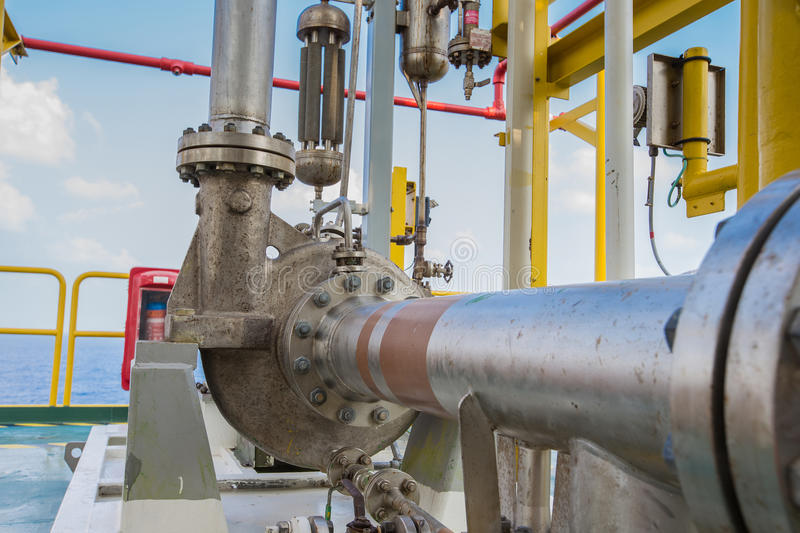Factors Affecting the Performance of a Centrifugal Pump

Centrifugal pumps are usually used in the Oil and Gas industry to mix and handle oilfield fluids. The rotary motion combined with a shaped pump housing creates centrifugal force to discharge fluids from the pumps.
Centrifugal pumps are used in the upstream oil and gas industry as part of tri-phase or multiphase pumping application. These pumps serve a wide variety of applications with many types such as electric submersible pumps, which are used as a water and oil separator in which water can be re-injected into a reservoir without the lifting it to the ground surface. They can transport a significant amount of low viscosity liquids in a short period and can pump several hundred gallons of liquid per minute if the product is compatible.
Centrifugal pumps, engineered for operational flexibility, efficiency and durability, meet the pumping needs of many oil and gas applications. These pumps operate efficiently in high-volume, low-output pressure conditions. Centrifugal pumps are energy efficient while providing high flow rates. All pumps including the low cost centrifugal pump, help improve profit margins. Hence they should be well maintained and used in parts of the transporting process that would maximise its efficiency.
The following main factors affect the performance of a centrifugal pump:
- Working Fluid Viscosity
Also defined as resistance to shear when energy is applied. In general, a centrifugal pump is suitable for low viscosity fluids since the pumping action generates high liquid shear.
- Specific Density and Gravity of Working Fluid
As the density of a fluid is its mass per unit of volume, a fluid’s mass per unit volume and gravity of a fluid is the ratio of a fluid’s density to the density of water. It directly affects the input power required to pump a particular liquid. When working with a fluid other than water, such as oil, it is important to consider the specific density and gravity since the weight will have a direct effect on the amount of work performed by the pump.
If the fluid is acidic or caustic, the pump wetted parts such as the casing and impeller materials need to hold up in service. The amount of solids present in the fluid and their size, shape and abrasive qualities will all be factors.
- Operating Temperature and Pressure
Pumping conditions like temperature and pressures are an important consideration for any operation. For example – High temperature pumping may require special gasketing, seals and mounting designs. Similarly, an adequately designed pressure retaining casing may be required for high-pressure conditions. Casing penetrations need to be considered as it acts as a source of stress for cracks and corrosion.
- Net Positive Suction Head (NPSH) and Cavitation
NPSH is a term that refers to the pressure of a fluid on the suction side of a pump to help determine if the pressure is high enough to avoid cavitation. Cavitation refers to the formation of bubbles or cavities in liquid, developed in areas of relatively low pressure around an impeller and can cause serious damage to the impeller and lead to decreased flow/pressure rates among other things. One must ensure that the system’s net positive suction head available (NPSHA) is greater than the pump’s net positive suction head required (NPSHR), with an appropriate safety margin. It is commonly accepted the static head in the pump will be maintained as 6.7m for water with a temperature of 10-20°C.
- Vapour Pressure of the Working Fluid
The vapor pressure of a fluid is the pressure, at a given temperature, at which a fluid will change to a vapor. It must be determined in order to avoid cavitation as well as bearing damage caused by dry running when the fluid has evaporated.
Interested to read other Oil & Gas articles? Check out: 3 Ways To Perform Asset Management for Oil & Gas
Advanced Practical Centrifugal Pump is a 3-day training course designed to provide a review of the pump design characteristics, configuration and applications, understanding affinity rules and size scaling, learning the principal considerations appropriate to specific production or process requirements for pump selection and more.
Contact us below to receive the latest training dates for this course:
